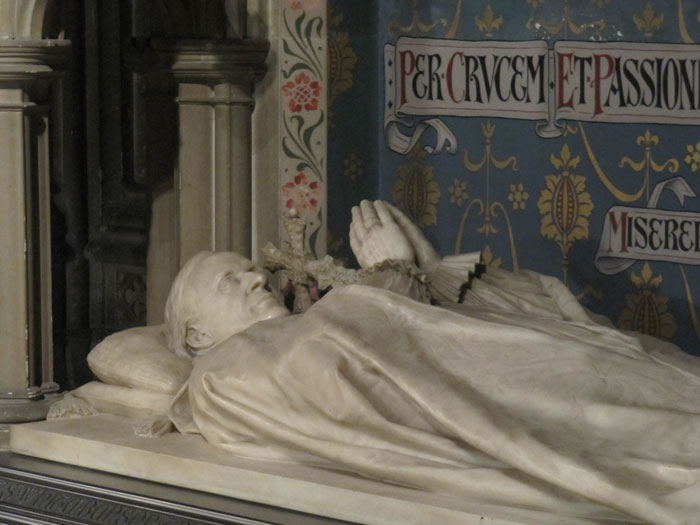Basics
Basics
Geology: metamorphosed limestone
Age: Lower Jurassic
Provenance: Apuan Alps, Tuscany, Italy
Where to see examples
tomb of Archbishop Benson
plaque to General Walker
Description

Carrara Marble is strictly speaking a generic term to describe a marble from the Carrara district, although it is most often associated with the pure white marble known more precisely as statutario. A variety of white marble with grey streaks is known as Bianca Carrara; sometimes the term ordinario is also used for an
off-white Carrara Marble. The classic Carrara Statutario is one of a number of similar looking white marbles quarried from around the Mediterranean. It usually has a characteristic homogenous texture and white colouration, sometimes with grey undertones and irregular, grey-coloured veins. It was the pure white marble which was most highly prized and used extensively for statuary. Many famous works of art have been sculpted from the stone including Michelangelo’s Pietà of 1499 and The Kiss (Le Baiser) by Rodin of 1898. Quarrying in the region of Carrara commenced in the Roman Period and the quarries are still active today.
The stone is made of calcium carbonate and was originally a limestone composed of the remains of shell material from marine organisms and lime mud deposited in a warm tropical sea. Later the Appenines (the mountain range that is the backbone of Italy) formed and the limestone sea floor sediments recrystallised under conditions of intense heat and pressure (metamorphism). The resulting rock consists of roughly equigranular grains of calcite (a crystalline form of calcium carbonate) making Carrara Marble a true geological marble and not just a builder’s marble. The grey streaks in the marble are formed from impurities in the originally limestone sediments, usually mixtures of clays or various iron minerals.
